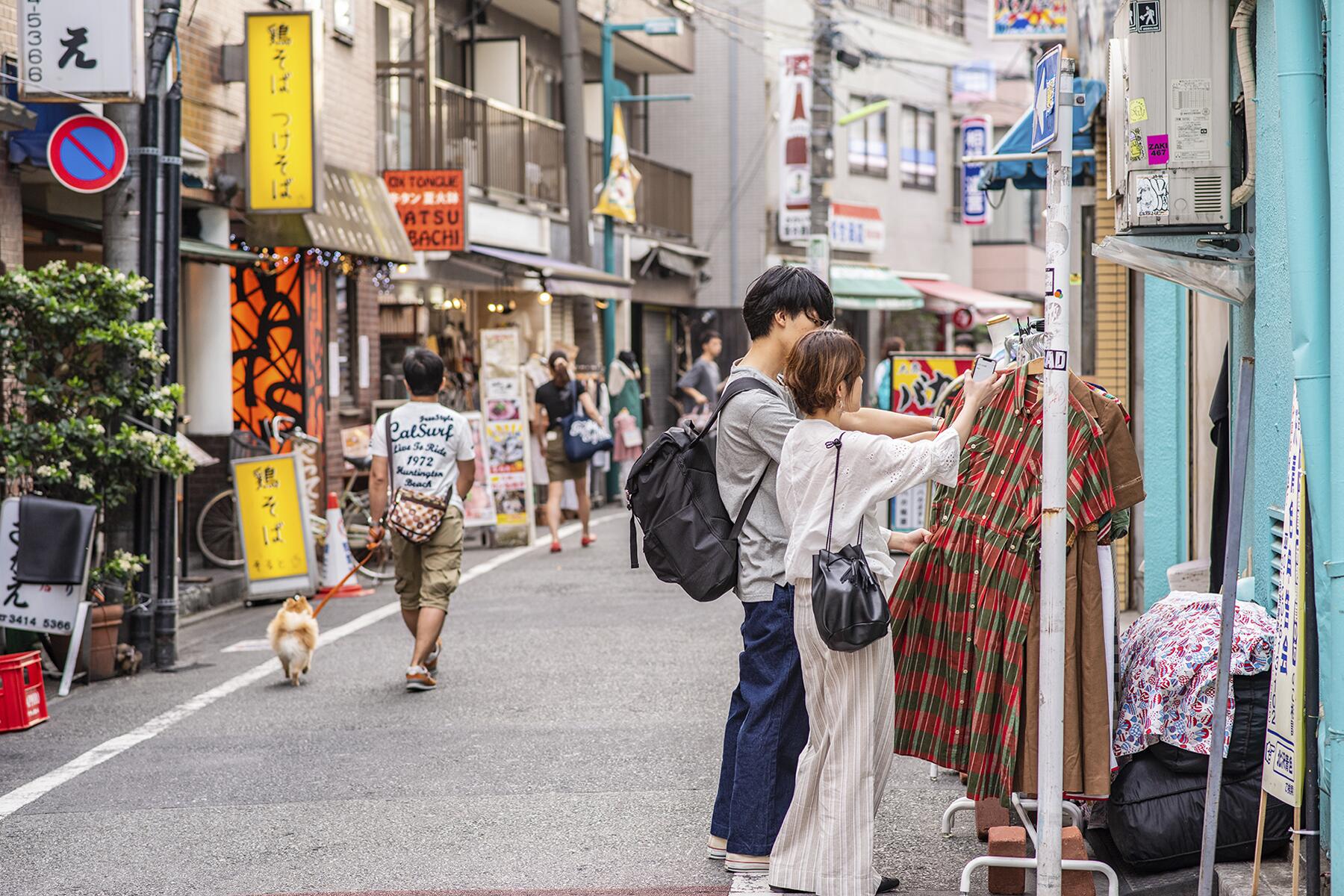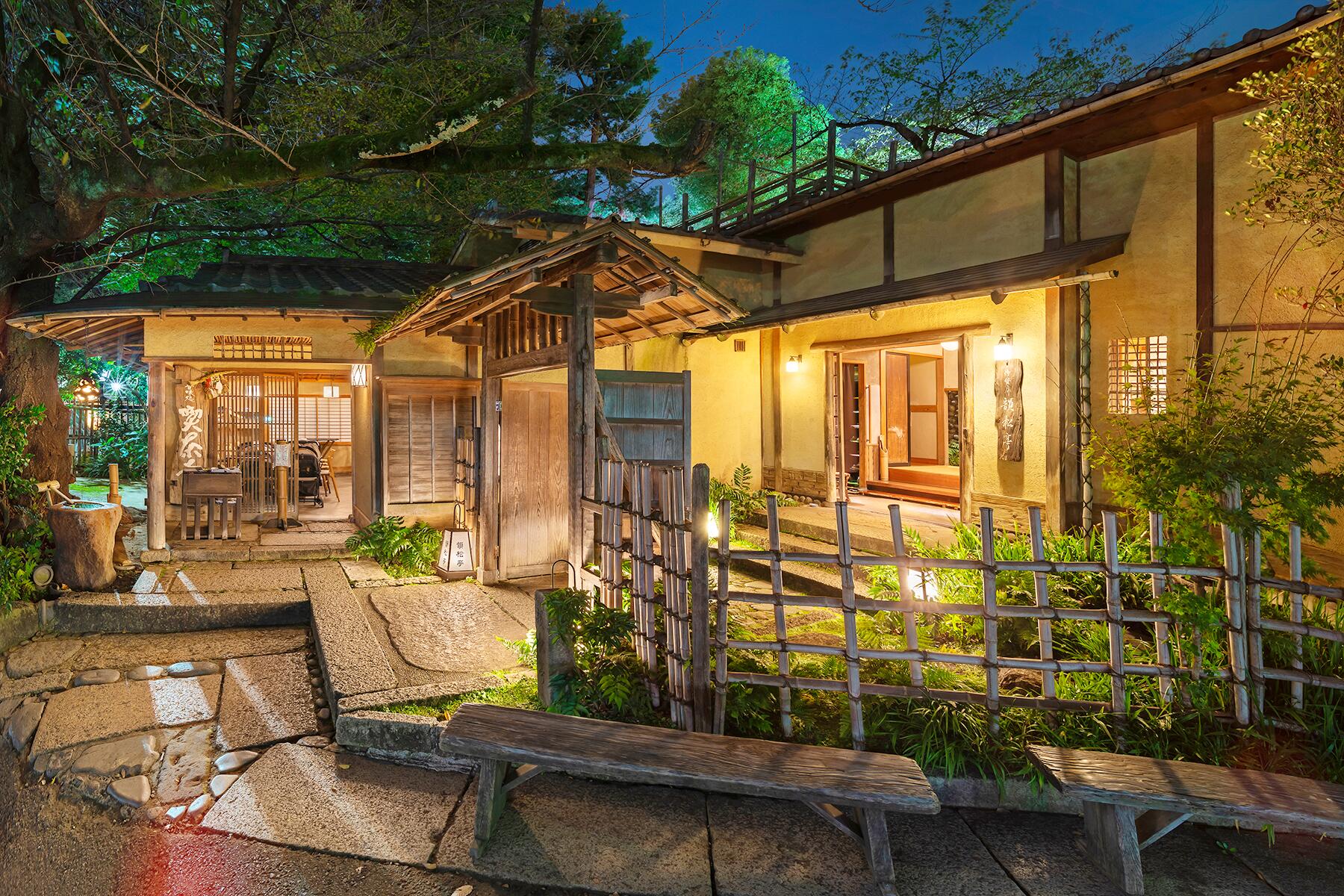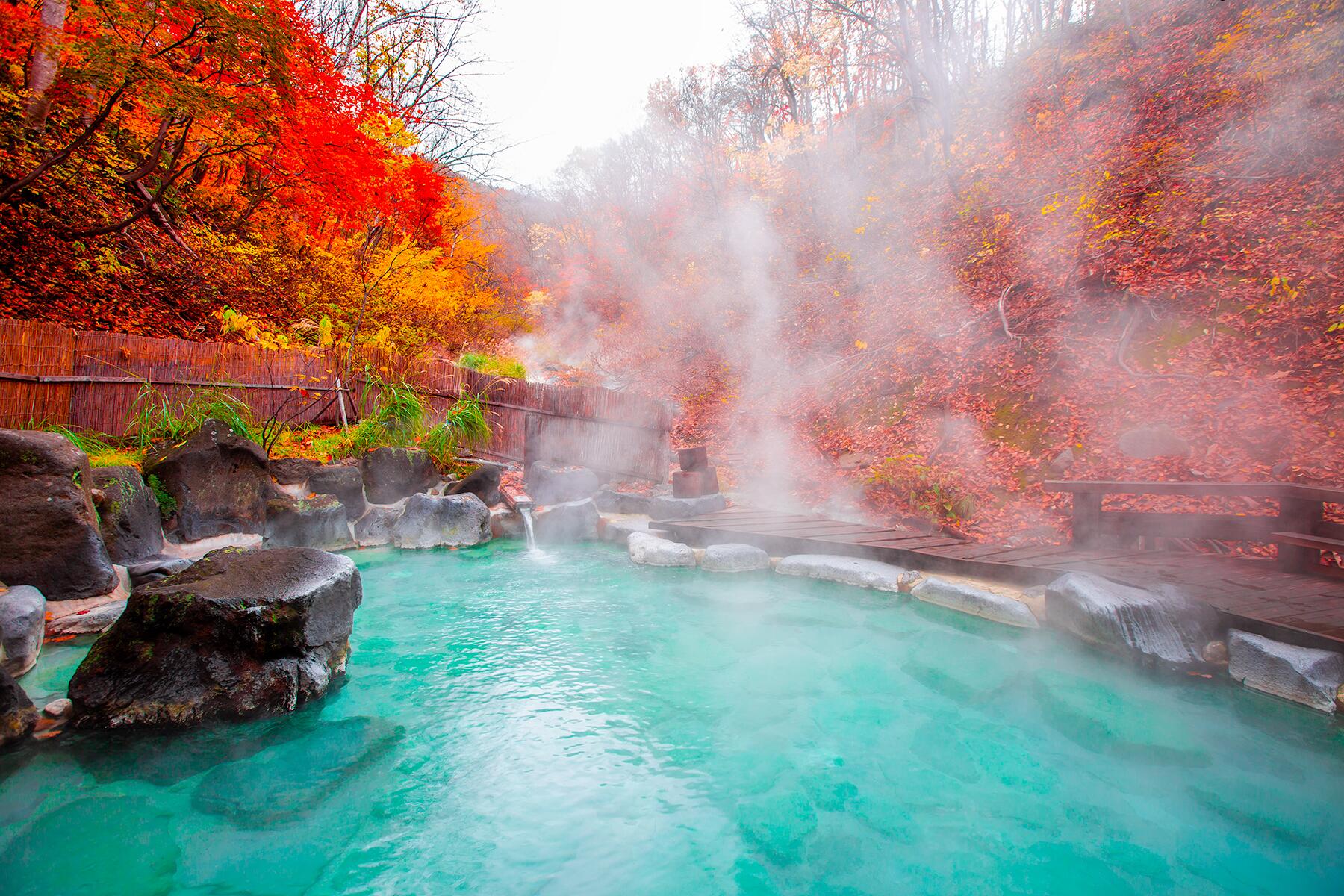Not all Japanese onsen are tattoo-friendly, but luckily, some are.
Sinking into steaming water is one of life’s great joys, and there’s nowhere better to soak any aches and worldly concerns away than a Japanese onsen. Loved by tourists almost as much as the locals, for whom visiting the bathhouse is a way of life, onsen are found up and down the island nation, as the volcanic and mountainous terrain provides hot springs by the thousands, which pump mineral-laden water into these extremely zen pools.
But there’s one particular rule around bathing in an onsen that may forbid many tourists: people with tattoos are not allowed in. I’ve got 16 tattoos myself, a few of which are rather large, so there’s no hiding them. But just as I began to accept that this meant I would be onsen deprived on my Japan trip, I heard that some spots are more lenient. The search was on.
But before we dive in, why these anti-tattoo rules? Well, it’s not just the onsen; it’s unacceptable to flash your body art in gyms, swimming pools, and even at the beach in Japan. Historically, Japanese people do not have tattoos; they’ve been associated with outlaws for centuries, as forehead markings were given to criminals as far back as 720 AD, and since the 20th century, members of the Yakuza, a local mafia of sorts, are known for being heavily tattooed. Tattoos were even completely outlawed in the 1930s. So, there’s a social stigma around them that runs deep.
Recommended Fodor’s Video
What People Love About Onsen
Onsen are calming, serene, and healthy. You start by bathing in a medium-temperature pool before moving to significantly hotter water, then cooling off in an icy bath. After one round like this, start the circuit again in the medium-temperature tub. Trust me, once you’ve done a few loops of heats, you’ll feel incredibly relaxed and have improved your circulation, which boosts immunity. Additionally, onsen waters contain minerals that are good for your joints, relax your muscles, and soften your skin. All this for roughly $5 entry.
When I first visited, I had a few small tattoos that were easy to cover up with band-aids found in every corner Family Mart. Covered up, I had a marvelous time at small, rural springs and even managed a spin in Spa World, Osaka’s mildly tacky but brilliant onsen megaplex. That just wouldn’t wash now. I had to track down the rare onsen that would let me in. The kind folks at the tourism board recommended the Tattoo Friendly Japan page, and I did a lot of trawling on Google Maps.
Where to Enjoy a Tattoo-Friendly Onsen
As I landed in Osaka, I felt pretty optimistic as I’d read about Fureai Onsen Yata, a bathhouse part of a human rights organization with real hot spring water pumped into their tattoo-friendly onsen. It’s just 20 minutes south of the city center near the Yamato River, an easy train ride away. A very friendly staff member greeted me, rented me a towel, and in I went, elated to melt away the long journey. I worked my way around their five indoor pools and the glorious outdoor one; I also sweated it out in their sauna. Before I knew it, three hours had passed.
Once I’d got my feet wet, I was hooked on bathing again, so I searched for another in Osaka the next day and was stoked to find Healthy Spa Tateba in the busy Namba area. The lovely, English-speaking CEO Hiromi Nishida has a sign outside that reads: tattoos are welcome.
This spa is more akin to a sento, a traditional bathhouse that dates back to a time when people didn’t have a bath or hot water at home. Sento pool water does have mineral content, but it’s not necessarily from a hot spring. This place was awesome and it was my first time in an ultrasound bath, a small pool with streams of electricity pulsing into the water. It’s a great pain relief method, but one for the brave, that’s for sure. I left their spa well-soaked and floaty; there really is nothing as tranquil as sitting in hot water for an evening.
Soon after, I headed to Sapporo, the capital of Japan’s north island, Hokkaido. I’d read about a traditional yet tattoo-friendly rural onsen in Jozankei, Hōheikyō Hot Spring–Jozankei is a spa town about 45 minutes south of Sapporo. I jumped on a shuttle bus watching the snow-capped mountains of Hokkaido pass by.
“We’ve always been tattoo-friendly, ever since we opened 30 years ago,” said manager Junpei Baba. It was my first snow in five years and my first time getting in an onsen when it was still cold outside. The joy of soaking between snow-covered knolls as the slight smell of sulfur wafts by is heaven for hot springs fanatics. Onsen waters don’t come from just any old hot springs; technically, an official onsen source must supply waters over 25℃ / 77°F and contain a certain level of minerals to don the name.
Back in the city, I decided to further my deep dive into the joy of sento as Sapporo is awash with delightfully old-school, rustic bathhouses. I went to a couple during my week there, but Kita No Sento was absolutely my favorite. The kind proprietor is a bathing devotee and was so welcoming, insisting on a Google Translate-assisted conversation to establish where I was from and explain to me how to use the sento. As well as a sauna and ultrasound pool, this sento has a black silica water bath to dip in, which is beneficial for your skin and bones due to its mineral content.
The last port of call was the infamous megapolis, Tokyo. I took the Shinkansen train from Sapporo to the capital, having arranged a Japan Rail Pass before arriving, which I highly recommend.
Staring out of the train window, fond memories of Tokyo’s bathhouses and fairground-esque onsen came back to me, but most of them are simply off-limits now that I’m tattooed.
“Why don’t you risk it?” many folks asked. Aside from that tact being disrespectful to Japanese culture, it’s definitely enforced; you’ll be asked to leave if anyone sees your ink and reports you to management.
Luckily, quite a few sento and onsen in the capital city allow tattooed folks. My very Japan-savvy pal Laura Studarus found a fantastic one for us to visit called Hisamatsuyu, about 20 minutes northwest of Shinjuku. With a divine natural hot spring onsen pool outside and elegant, spacious pools of numerous temperatures inside, we enjoyed relaxing while staring at the geometric light show projected onto the wall.
Having managed to visit seven tattoo-friendly onsen during my 12-day Japan trip, I left the country satisfied and comforted, knowing that I’ll be able to find places where I’m welcomed—tattoos and all—on my next trip.
Tips and Onsen Etiquette
Tattoo taboo isn’t the only bathing rule in the country; the quintessentially Japanese experience has a few.
– Leave your shoes in lockers at the door as you enter.
– Shower and clean yourself thoroughly before getting in the bath.
– All bathing is naked. Don’t worry: men and women have separate bathing zones.
– Rinse your feet off with one of the plastic bowls that are dotted around before re-entering a pool.
– Do not bring phones, and definitely do not take any photos.
– Be quiet, relax, and enjoy.



